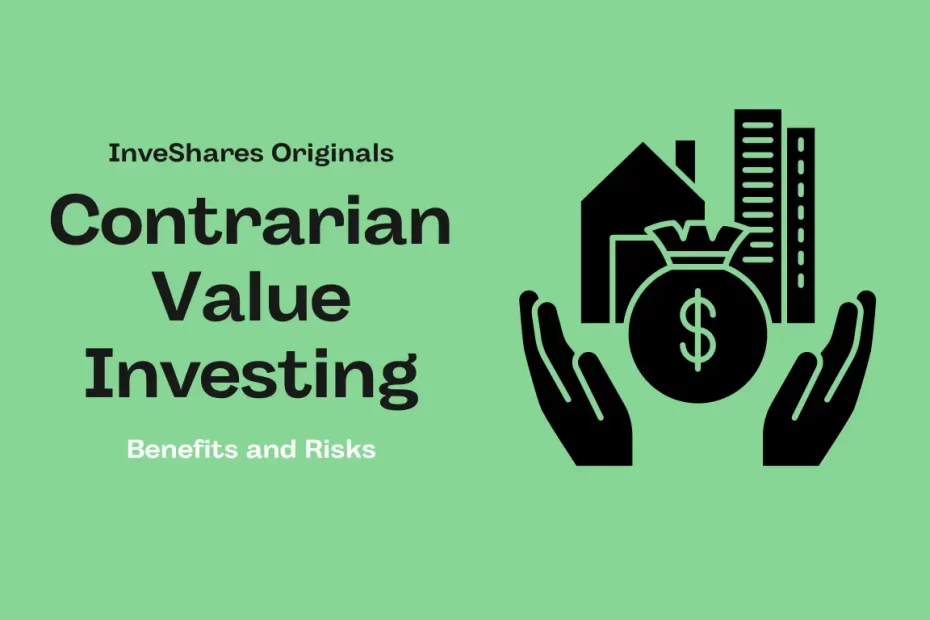Introduction to Contrarian Value Investing
• Definition of contrarian value investing
• The principles of value investing and how contrarian value investing fits within this framework
• The potential benefits of contrarian value investing, including the potential for above-average returns and the opportunity to buy undervalued assets
Contrarian value investing is a strategy that involves identifying and buying undervalued assets that are out of favor with the broader market. This approach is based on the principles of value investing, which involves seeking out assets that are trading at a discount to their intrinsic value and holding them until they reach their full potential. Contrarian value investing takes this approach a step further by actively seeking out assets that are unpopular or undervalued by the market and attempting to capitalize on their potential for appreciation.
The process of contrarian value investing involves identifying and evaluating potential investments using the principles of value investing. This may involve looking for assets that are trading at a discount to their intrinsic value, and analyzing the financial health and management of the underlying companies.
It’s important to note that carries certain risks, including the possibility of buying into declining industries or companies that are experiencing financial difficulties. To minimize these risks and maximize the potential rewards of contrarian value investing, it’s important to carefully evaluate potential investments, diversify the portfolio, and regularly review and rebalance holdings.
How Contrarian Value Investing Works
• An overview of the process of identifying and evaluating potential investments using the principles of contrarian value investing
• Tips for managing risk in the contrarian value investing process, including the importance of diversification and the need to regularly review and rebalance the portfolio
• The role of professional financial advisors in the contrarian value investing process
Contrarian value investing involves identifying and evaluating potential investments using the principles of value investing. This may involve looking for assets that are trading at a discount to their intrinsic value, analyzing the financial health and management of the underlying companies, and considering industry trends and market conditions.
To manage risk in the contrarian value investing process, it’s important to diversify the portfolio and regularly review and rebalance holdings. This can help to spread out risk and increase the chances of generating consistent returns over time. It’s also important to be aware of market conditions and to carefully evaluate the financial health of potential investments in order to minimize the risk of buying into declining industries or companies that are experiencing financial difficulties.
Professional financial advisors can play a valuable role in the contrarian value investing process, particularly for investors who are unfamiliar with the principles of value investing or who don’t have the time or expertise to manage their own portfolios. Financial advisors can help investors to identify and evaluate potential investments, create a customized portfolio that aligns with their financial goals and risk tolerance, and provide ongoing guidance and support as the portfolio evolves over time.

Choosing the Right Contrarian Value Investments
• Factors to consider when evaluating potential investments, including the company’s financial health, management team, and industry trends
• Resources for finding and researching contrarian value investments, including financial websites and publications, brokerage firms, and professional investment firms.
When evaluating potential contrarian value investments, there are a number of factors to consider. These may include the company’s financial health, including its balance sheet, income statement, and cash flow statement. It’s also important to consider the management team, including their experience and track record, as well as industry trends and market conditions.
There are a number of resources available to help investors find and research potential. These may include financial websites and publications, brokerage firms, and professional investment firms. It’s important to carefully evaluate any information sources and to consider multiple viewpoints in order to make informed investment decisions.
In addition to these resources, investors may also want to consider working with a professional financial advisor, who can provide guidance and support throughout the investment process. Financial advisors can help investors to identify and evaluate potential investments, create a customized portfolio that aligns with their financial goals and risk tolerance, and provide ongoing support as the portfolio evolves over time.
Risks and Rewards
Contrarian value investing carries certain risks, including the possibility of buying into declining industries or companies that are experiencing financial difficulties. It’s important for investors to carefully evaluate potential investments and to be aware of market conditions in order to minimize these risks.
Despite these risks, the potential for above-average returns and the opportunity to buy undervalued assets that may appreciate in value over time. To maximize the potential rewards of contrarian value investing, it’s important to diversify the portfolio and regularly review and rebalance holdings. This can help to spread out risk and increase the chances of generating consistent returns over time.

Additionally, investors may want to consider working with a professional financial advisor, who can provide guidance and support throughout the investment process. Financial advisors can help investors to identify and evaluate potential investments, create a customized portfolio that aligns with their financial goals and risk tolerance, and provide ongoing support as the portfolio evolves over time.
Conclusion: Is Contrarian Value Investing Right for You?
• A summary of the key points covered in the article
• The potential benefits and drawbacks of contrarian value investing for different types of investors
• The importance of carefully evaluating your financial goals and risk tolerance before deciding whether is a good fit for you
In conclusion, investing is a strategy that involves identifying and buying undervalued assets that are out of favor with the broader market. This approach is based on the principles of value investing and offers the potential for above-average returns and the opportunity to buy undervalued assets that may appreciate in value over time. However, it’s important to be aware of the risks involved, including the possibility of buying into declining industries or companies that are experiencing financial difficulties.
When deciding whether investing is right for you, it’s important to carefully evaluate your financial goals and risk tolerance. This type of investing may be a good fit for investors who are looking for a way to potentially generate above-average returns and who are willing to accept the risks in exchange for the potential rewards. On the other hand, for investors who are risk-averse or who are looking for a more passive approach to investing.
Keep Following InveShares for more such awesome content right here!
